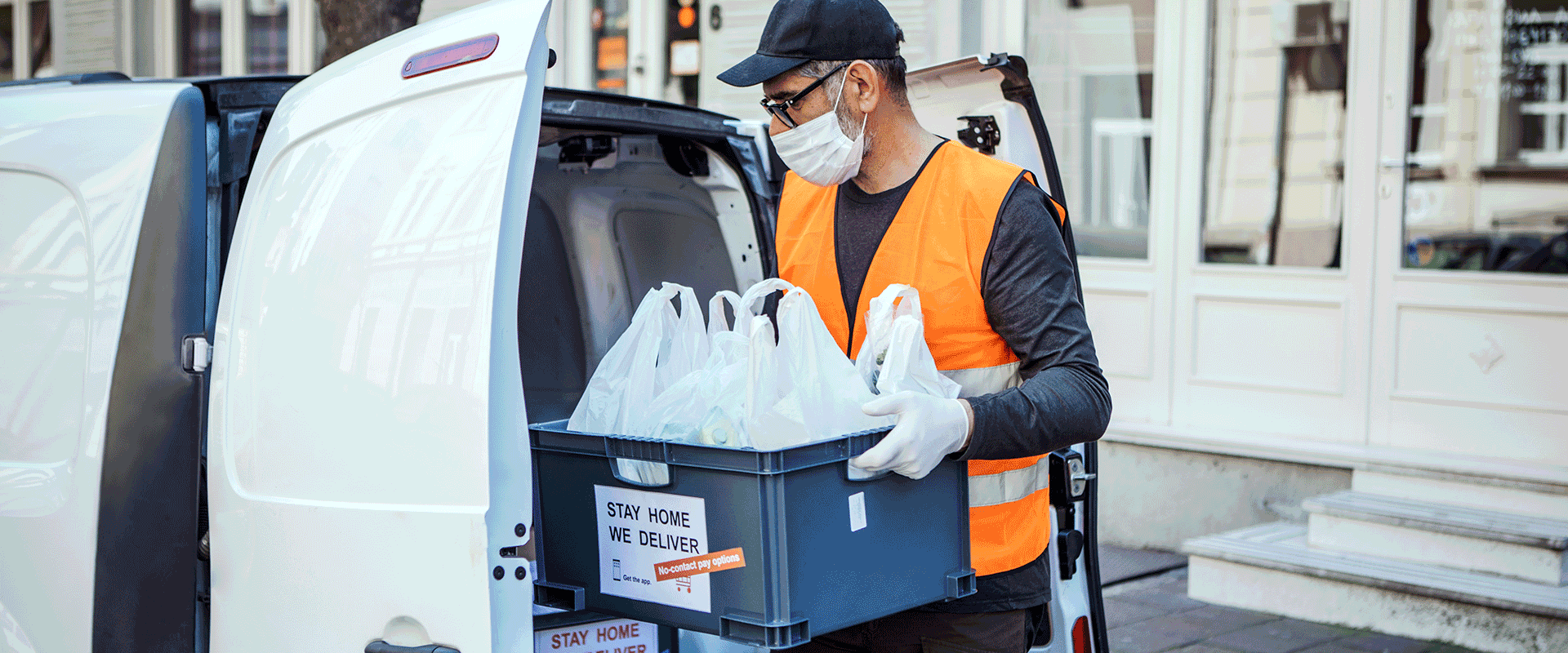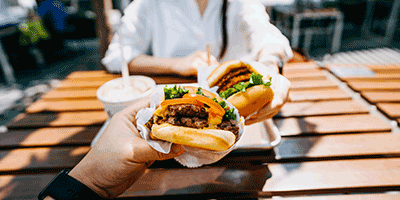Now, after more than a year of pandemic-related tailwinds, the potentially immense payoff that F&B manufacturers can realize by successfully expanding their ecommerce presence has never been clearer. Maximizing the potential of ecommerce requires that they take the following four key steps:
Step 1: Develop an ecommerce strategy
F&B manufacturers need a comprehensive ecommerce strategy that includes a strategic vision, a BHAG (big hairy audacious goal) and an outline of capabilities necessary to execute, along with a thorough evaluation of any profit improvement levers they have to ensure profitable growth. The plan should clearly address how to navigate the four ecommerce channels and how to approach key capabilities (e.g., fulfillment) through building, partnering with or acquiring key enablers. And regardless of the strategic elements that they decide to incorporate, F&B manufacturers should develop a resourcing plan to fully support the broader ecommerce strategy and ensure its success.
Step 2: Organize for success
For business to expand in ecommerce, dedicated resources are essential. Many manufacturers establish stand-alone ecommerce capabilities (across people, processes and technology) that utilize specialized channel knowledge to create best-in-class solutions. Sam’s Club and Walmart, for example, both have separate CEOs and supporting organizations for their respective “.com” businesses.
If ecommerce is new to the organization, this will also require a significant talent acquisition effort, but bringing in outside talent can often be the best option for success. The result of successfully organizing around ecommerce is that the speed at which decisions are made is much faster than it would be otherwise. For example, price changes can be made multiple times a day online versus over multiple months in a brick-and-mortar environment.
Manufacturers that sell through Amazon will also need to decide whether to manage the channel via a first-party (1P) or third-party (3P) relationship. If they choose to work with a 3P, they’ll need to decide whether fulfillment should be handled in-house or through a partner. These decisions have tremendous implications for a business’s cost structure and ability to scale online.
Having a 1P relationship allows larger brands (e.g., more than $100 million of Amazon sales) to benefit from traditional brand/retailer relationships and requires only moderate capabilities to manage Amazon’s unique inventory flows. Having a 3P relationship with self-fulfillment requires the most investment to build out or leverage the brand’s existing fulfillment capabilities. It also enables full control over operations (e.g., brand content, shipping, pricing, customer service) and the economic benefits of traditional retail DTC.
Finally, a 3P relationship with partner fulfillment is best suited for smaller brands because they can leverage outsourced fulfillment capabilities to provide cost-effective paths to meet demand and scale their online business.
If an F&B manufacturer has a DTC element in its ecommerce strategy, even more radical changes are required. Well-run DTC organizations operate quite differently than traditional F&B suppliers; they run at a much faster speed and require more nimble decision-making. Most important, DTC organizations need to find a way to get eyeballs to their websites in order to drive traffic and volume.
This is no easy task. The ability to drive traffic is the main barrier for many F&B suppliers looking to unlock their DTC potential. Creative content is required to give consumers a reason to frequent the site, which is often specific to the community of consumers it serves (e.g., gluten intolerant, veterans).
Omnichannel is another great way to drive traffic. For example, wineries and their tasting rooms can be used as the “hook” for club consumers, while meal kit providers can partner with retail brick-and-mortar grocery to drive mindshare through in-store merchandising and displays.
Step 3: Establish ecommerce price pack architecture
For many F&B manufacturers, the accelerating shift from in-store to online sales has serious profitability implications, as ecommerce runs the risk of being the lowest-margin channel, with high last-mile delivery costs and greater price transparency. All this can lead to a “race to the bottom” with more frequent price changes than occur with brick and mortar.
Whereas in-store sales in channels like convenience stores tend to skew toward more lucrative single-serve products (e.g., $1.79 twenty-ounce soft drink), online sales tend to skew more toward lower-margin multipacks. Single-serve products can generate huge margins for manufacturers, as a desire for immediate consumption means consumers tend to forgo making price comparisons with other products. Moreover, last-mile shipping for F&B products — especially beverages — is expensive, and pricing transparency helps create that race to the bottom as retailers and manufacturers fight for share.
With that in mind, F&B manufacturers need to develop an ecommerce price pack architecture (PPA) strategy and a granular view of where profits are generated across their categories, products and SKUs. Such granular profitability analysis will enable them to have a deep understanding of which parts of their business should be strategically prioritized when they’re investing to support ecommerce. Without this understanding, manufacturers may find themselves rushing to increase top line sales as their margins quickly erode underneath.
Developing a PPA strategy is critical to establishing channel “swim lanes” in order to reduce price comping by retail partners. A PPA strategy involves balancing consumer, retailer and supplier needs so as to strive for a win-win-win situation. This requires understanding the consumer’s willingness to pay (through advanced discrete choice conjoint science) versus the cost to produce at the attribute level (e.g., size, count, claims, price). A well-established PPA strategy will enable tweaks to the offering (e.g., size, count, claims, price) by channel to reduce the profit erosion threat from price comparisons across channels.
To help stave off the race to the bottom, some brands should also establish a minimum advertised price (MAP) to protect against deflationary price pressures. But it should be done with surgical precision. Not all brands lend themselves well to a MAP policy; enforcement of MAP can be tricky and must be a commitment, with trade-offs to be weighed.
Finally, to optimize trade spend and drive sales toward strategically important categories, the management of trade promotions is essential. Trade spend is typically the second-largest cost item for beverage manufacturers after cost of goods sold, so the costs associated with not effectively deploying that capital are significant. Many manufacturers employ robust trade management tools that can optimize trade spend based on pricing elasticity and advanced analytics.
Several platforms utilize visualization techniques to model consumer behaviors and generate strategic insights. For example, Eversight’s Offer Innovation solution allows retailers and manufacturers to micro-test thousands of different promotions with real shoppers on digital platforms so they can use those results to build best-in-class promotion strategies. Indeed, manufacturers need to utilize the latest platforms to ensure their trade spend aligns with high-margin and value-accretive products, and that it’s properly driving purchasing in those categories.
Step 4: Optimize the digital shelf
The digital shelf presents a double-edged sword to F&B suppliers. On the one hand, there are no limitations to what can be displayed on the shelf. On the other hand, it can be hard to get noticed in the digital sea of product proliferation. Attracting attention on the digital shelf requires a different set of resources and capabilities that manufacturers need to embrace. Getting the “blocking and tackling” right is critical to success.
Key elements of optimizing the digital shelf include ensuring:
- Product titles include keywords but are still clear and readable
- All images are clear and high quality, conveying both product count and notable benefits
- Product descriptions include key facts, nutritional information and relevant keywords
Additionally, there should be a minimum of 25 product reviews four-star or higher (out of five) to leverage search rankings; reviews also impact offline sales. And although brands do not have control over pricing, they should monitor prices as retailer algorithms can price-match incorrect SKUs, resulting in prices that are either too high or too low.
Blocking and tackling resources are also needed to manage product images and related content online. Multiple images, in-depth descriptions and videos can help drive consumer engagement, while managing online reviews is equally critical. So is the ability to manage trade and promotions online.
For example, digital coupons have become critical to online success. In April 2021, digital coupons overtook print circulars in redemption for the first time in history. Digital load-to-card coupons comprised just 4% of distributed coupons, but redemptions increased to 29% in 2020, despite overall coupon redemption falling by 21%. Total coupons distributed decreased 15%, with free-standing inserts comprising 90% of distribution and just 28% of redemption in 2020.
This means the conversion rate from distribution to redemption in digital coupons is much higher than in paper. Surveys indicate the uptick was driven across all age groups, with the strongest growth coming from baby boomers. Clearly F&B manufacturers need to embrace digital coupons and other digitally savvy promotion techniques to drive ecommerce growth for today’s consumer.







